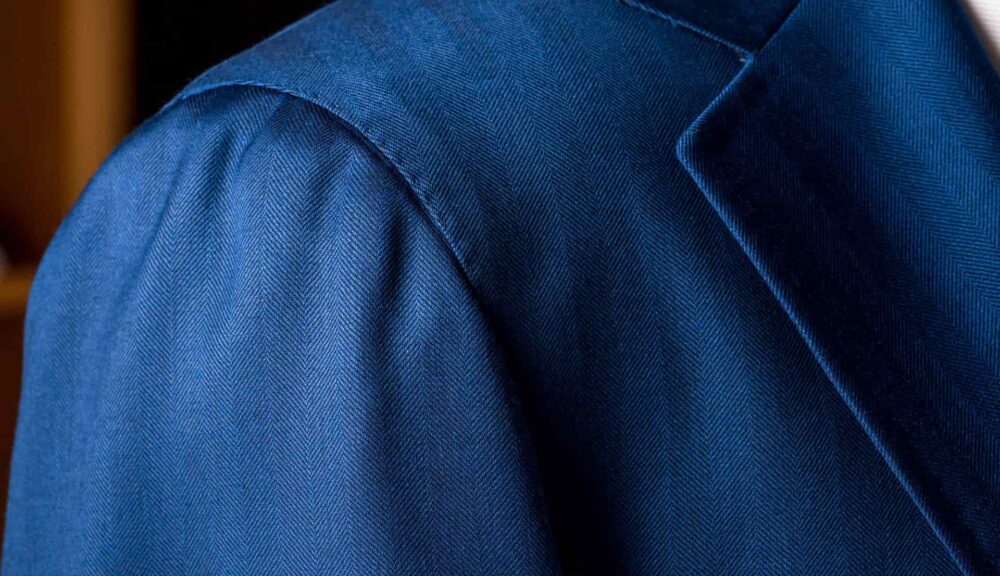The world of Neapolitan menswear is a realm of unparalleled elegance, where sartorial traditions blend seamlessly with a distinctive flair for comfort and style. At the heart of this sartorial philosophy lies a deep understanding of fabrics and patterns, meticulously chosen to complement the changing seasons and the unique demands of the Neapolitan climate. Far from being a mere aesthetic choice, the selection of seasonal materials is a cornerstone of authentic Neapolitan dressing, dictating not only comfort but also the very essence of a man’s wardrobe throughout the year.
This article delves into the fascinating interplay of fabrics and patterns that define Neapolitan menswear across the seasons. We’ll explore how these choices reflect a commitment to both practical comfort and timeless style, offering insights into building a wardrobe that is both functional and exquisitely refined.
Spring: Embracing Lightness and Breathability
As winter’s chill recedes, Neapolitan menswear sheds its heavier layers, embracing fabrics that offer breathability and a sense of lightness. Spring in Naples is characterized by mild temperatures and a vibrant atmosphere, calling for materials that allow for comfort without sacrificing sophistication.
The Reign of Linen and Cotton
Linen stands as the undisputed king of spring fabrics in Neapolitan tailoring. Its natural breathability and moisture-wicking properties make it ideal for warmer days. While often associated with a relaxed, slightly rumpled aesthetic, Neapolitan linen suits and jackets are crafted with an exquisite hand, often unlined or half-lined, to maintain their structural integrity while maximizing comfort. The beauty of linen lies in its ability to drape elegantly, offering a casual sophistication that is distinctly Neapolitan.
Cotton, particularly high-quality varieties like Egyptian or Sea Island cotton, also plays a crucial role. From crisp shirts to lightweight chinos and unstructured jackets, cotton provides a softer hand and a more refined finish than linen, making it versatile for both casual and semi-formal occasions. Seersucker, a puckered cotton fabric, is another spring staple, renowned for its ability to stand away from the skin, promoting air circulation.
Subtle Patterns for a Fresh Start
Spring patterns tend to be more understated, reflecting the freshness of the season. Think delicate checks such as Glen Plaid or Prince of Wales in lighter tones, or subtle stripes. Plain weaves and solid colors, particularly in shades of blue, beige, and light grey, are also highly favored, allowing the quality of the fabric and the cut of the garment to speak for themselves. An isaia jacket in a light linen check, for instance, perfectly embodies this spring sensibility.
Summer: Conquering the Heat with Style
Neapolitan summers are notoriously hot and humid, demanding fabrics that are not only breathable but also actively cool the wearer. The focus shifts entirely to maximizing comfort without compromising on the impeccable Neapolitan aesthetic.
The Art of Open Weaves and Featherlight Materials
High-twist wools, such as fresco, are a surprising summer hero. Despite being wool, their open weave allows for exceptional airflow and wrinkle resistance, making them perfect for travel and maintaining a sharp appearance in the heat. Silk blends also come into their own, offering a luxurious hand and a cooling effect when blended with linen or cotton.
For shirts, light poplins and voile are preferred, offering a feather-light feel against the skin. Unlined construction is paramount in summer tailoring, allowing garments to move freely and the body to breathe. The emphasis is on a relaxed, almost effortless elegance, where the fabric itself contributes significantly to the overall comfort.
Boldness in Summer Patterns
While spring favors subtlety, summer often sees a bolder approach to patterns. Larger checks, windowpanes, and even playful stripes can be incorporated into summer jackets and shirts. Vibrant colors, inspired by the Mediterranean landscape, emerge – think rich blues, earthy terracotta, and even subtle pastels. A well-chosen isaia suit in a lightweight fresco wool, perhaps with a subtle windowpane pattern, can be the epitome of summer sophistication.
Autumn: A Return to Texture and Depth
As temperatures begin to drop, Neapolitan menswear gracefully transitions towards fabrics that offer more warmth and textural interest. Autumn is a season of richness and depth, reflected in both material choices and patterns.
The Embrace of Flannel and Heavier Wools
Flannel, with its soft, brushed surface, becomes a cornerstone of the autumn wardrobe. It offers warmth without excessive bulk and drapes beautifully, lending a sophisticated air to suits and sport coats. Cashmere and cashmere blends also make their appearance, providing luxurious warmth and an incredibly soft hand.
Heavier worsted wools, tweed, and even corduroy find their place in autumn collections. These fabrics offer a tactile experience, adding depth and character to garments. The construction of suits and jackets might become slightly more structured, though still retaining the characteristic Neapolitan softness in the shoulders.
Earthy Tones and Classic Patterns
Autumn patterns often lean towards traditional choices. Herringbone, houndstooth, and larger checks in earthy tones like browns, greens, and deeper blues are prevalent. Solid colors in rich, autumnal hues also feature prominently. The overall aesthetic is one of understated elegance, reflecting the contemplative mood of the season. An isaia sport coat in a rich tweed or a sophisticated flannel can elevate any autumn ensemble.
Winter: The Pinnacle of Warmth and Refinement
Neapolitan winters, while milder than many other parts of Europe, still call for substantial warmth and protection. This is where the most luxurious and insulating fabrics take center stage.
The Luxury of Cashmere and Heavy Wool
Heavy worsted wools, including luxurious vicuña and cashmere, are the ultimate winter fabrics. They offer unparalleled warmth, softness, and a refined appearance. Overcoats become essential, crafted from dense wools or cashmere, designed to provide both protection from the elements and a commanding presence.
Velvet also makes an appearance, particularly in evening wear or for statement jackets, offering a touch of opulent luxury. The construction of winter garments is typically more structured and often fully lined to maximize insulation.
Bold Patterns and Rich Colors
Winter patterns can be quite bold, with strong checks and stripes in darker, richer colors. Plaids, particularly in a larger scale, are popular for winter jackets and suits. Deep blues, charcoal greys, and even burgundy or forest green command attention. The emphasis is on creating a powerful and sophisticated silhouette, where the fabric and pattern work together to convey warmth and refined taste.
Conclusion: The Enduring Art of Seasonal Dressing
The selection of seasonal fabrics and patterns in Neapolitan menswear is more than just a fashion trend; it’s a deeply ingrained tradition that prioritizes comfort, quality, and timeless style. From the airy lightness of spring linen to the luxurious warmth of winter cashmere, each season brings forth a curated palette of materials and designs. Understanding these nuances allows one to appreciate the artistry behind Neapolitan tailoring and to build a wardrobe that is both practical and exquisitely elegant year-round. By embracing the rhythm of the seasons, a man can truly master the art of dressing with authentic Neapolitan flair.
Author Bio:- The author is a seasoned writer and sartorial enthusiast with a passion for classic menswear and its rich traditions. With years of experience exploring the nuances of tailoring and fabric, they offer insights into cultivating a timeless and sophisticated personal style. Their work emphasizes quality craftsmanship, seasonal appropriateness, and the enduring appeal of well-made garments.






